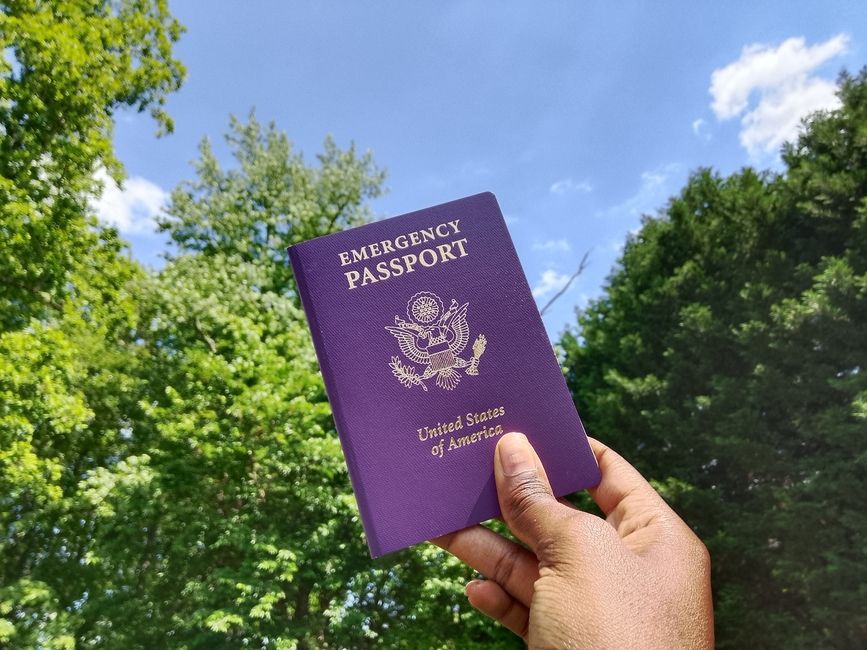How to Get an Emergency Passport as a U.S. Citizen in Thailand in 2025
In Thailand, Songkran is one of the most exciting times of the year. It's the Thai New Year and marks the passing of one year on the solar calendar. Everywhere you go, there's music, dancing and, of course, water. People celebrate this passage by pouring water over Buddha images, the hands of elders, and anyone in the near vicinity. It's been popularized by the country-wide water gun fight that breaks out for the holiday. It's widely known that during Songkran, if you don't want to get wet, then simply don't go outside. There are people on corners, storefronts, and sidewalks waiting to find someone to engage in a water fight or catch a poor ignorant soul by surprise. However, all of this fun can quickly turn sour if your important belongings aren't properly protected. Unfortunately, I'm speaking from personal experience. At the very least, now I can impart this lesson onto others so that nobody else has to learn the hard way.
Songkran lasts different stretches of time depending on the region. Most provinces stick to the allotted three days, but places like Pattaya extend the celebration to 10 days. There are even some provinces that compress the festivities into one day. I was on my third day of Songkran when I realized I was trapped in Thailand.
As this is my first big travel journey I was highly unaware of all of the intricacies that came with owning a passport. One of the biggest rules is that it should at least be legible. If you get your passport wet, you absolutely cannot fly. The specifics of your entry visa will be impossible to read and customs will not be able to tell when you entered the country or whether you've overstayed your visa. I had no idea about any of this but it slowly became more and more clear with each jaw I saw drop when I showed them my passport. The winces also helped to send the message home.
The day before my flight was set to take off, I scoured Google to try and figure out my next steps. As all-knowing as the search engine is rumored to be, I couldn't find any information on what to do. I called the U.S. Embassy in Bangkok and was met with an answering machine. With no options left, I caught a ride to the embassy to try and solve the problem in person. I arrived with the best news I could've gotten that day: The embassy was closed for the Songkran holiday and I needed to come again tomorrow morning. I turned it over in my head as many times as I could bear. I came to the conclusion that the only way I could go to the embassy in the morning, get a new passport, and successfully board my 10 a.m. flight is if I had a time machine. Thankfully, Delta allows flights to be rescheduled and only charges or refunds the difference. With that out of the way, I finally had time to focus on the main issue:
What to do if you get your passport wet in Thailand?
Here's How to Get an Emergency Passport in Thailand as U.S. Citizen
Step 1: Schedule an Appointment
First, you'll need to schedule an appointment for your issue. The U.S. Embassy in Bangkok does not accept walk-ins. You'll have to go to their website and schedule an appointment with any free slot they have available. If none are available your next option is to email the embassy directly if it's an emergency.
Step 2: Prepare the Necessary Documents
In order to receive an emergency passport, you'll need these things.
- A completed and printed DS-82 Application
- A 2 in x 2 in headshot of yourself with a white background
- Your current passport
You'll also need to bring a fee of $130 in cash or on a card to get your emergency passport in Thailand. That fee hurt my feelings the most but still I had to push through. All of these things, except your passport of course, are actually available at the embassy. They have empty forms that you can fill out on-site. If you're unable to find anywhere that can print out your headshot, they also have a photobooth at the embassy facilities in Bangkok. This was such a refreshing experience compared to somewhere in the States. If I was trying to do this at the DMV in America, I'd probably be turned away for forgetting to bring a blood sample or my 5th grade science project with my paperwork. It was so nice to see how accommodating and friendly they were. However, if you're in a time crunch, it's better to have all of these prepared beforehand.
Step 3: Retrieve Your Passport
After you've submitted all of your information and paid the fee, everything else is a waiting game. The time it takes to receive your emergency passport ranges from situation to situation, but it is possible to get it on the same day. I was fortunate enough to have my application submitted at 9 am and pick up my passport at 2 pm. When you get your emergency passport, it comes with instructions on how to exchange it for a regular one in America. Since you've paid the fee abroad, all that's left to do is exchange for a regular passport in your home country free of charge.
Traveling with Your Emergency Passport
When traveling with an emergency passport, it's important to reserve extra time for any holdups that may occur. Customs might need more time to process it as opposed to a normal passport. Personally, I had to go to three different people before I was able to pass through customs while everyone was able to use the automated passport system. This added an additional 15 minutes to my check-in time. If you're already running late, that may be the difference between you catching your flight or missing it.
On a lighter note, walking with an emergency passport is like having a huge, flashing, neon sign that says something bad happened. Every time I handed my passport to a customs agent they would wince or cringe. It was worse when they would outright laugh at me. I even got an "uh oh" during one of these occurrences. It doesn't help that "Emergency Passport" is written on the outside of it in bold metallic letters. In short, be prepared for people to ask questions. Even still, each time a question was asked, it was an opportunity for me to recount a story. Frankly, for me, that's been my goal the entire time. As travelers, every experience we come across, no matter how stressful or unfortunate it is, is another story waiting to be told.
Related Posts

Teaching in Thailand: Expecting the Unexpected and Redefining Productivity
One of the most magical (and, at times, frustrating) things about being an English teacher in Thailand is how chaotic and spontaneous everything is. Before I arrived, I had so... keep reading
Unexpected Things I Wish I Knew Before Moving to Thailand: The Ultimate Guide to Living in Thailand
I'm sure you've read enough big-picture descriptions of daily life as an American expat living in Thailand. Now, indulge in some of the quirks and seemingly small idiosyncrasies that define daily life here, based on my personal experience living right outside of Bangkok.

A Day in My Life Teaching Kindergarten
Before moving overseas, one question that constantly circled my mind was: What will my everyday life look like? I had lots of ideas, but I quickly realized it's impossible to... keep reading

